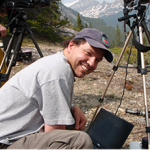Wildfires play a fundamental role in the Earth system. Globally, an area of the order 350 Mha is burned on an annual basis, with substantial associated carbon emissions. The disturbance to the atmospheric and surface state caused by fire events can be sensed remotely from space using a variety of techniques, including identification of ‘hot-spots’, burnt area and fire radiative power as well as atmospheric impacts such as concentrations of certain gases and aerosols.
Termed by NASA the ‘fire continent’, substantially more than half of all global annually burned area occurs in Africa (Giglio et al., 2013). While there has been a substantial amount of research focused on quantifying African fires and their gaseous and particulate emissions, and on investigating their interplay with cloud formation and development, work has tended to focus on specific locations within the continent and not on the overall impact of fire activity on top-of-atmosphere, atmospheric and surface radiative energy budgets at different scales. Both temporal and spatial resolution are likely critical in correctly capturing the severity of fire events in terms of their instantaneous and longer-term radiative impacts (e.g. Andela et al., 2015, Dintwe et al., 2017). Quantifying and understanding the drivers behind these scalings will also bring new insights as to how well the link between fire occurrence and radiative impact is, and can be expected to be, captured in current global Earth-system models.
In this project we will primarily make use of high temporal resolution observations from two instruments onboard the geostationary Meteosat series of satellites, namely the the Spinning Enhanced Visible and Infrared Imager (SEVIRI) and the Geostationary Earth Radiation Budget (GERB) instrument, both viewing Africa from 2004 until the present day. We will use the fire detection tools developed by co-supervisor Wooster and implemented operationally on the data stream coming from SEVIRI and use these alongside data from GERB, which is the only broadband instrument in geostationary orbit, and which assesses Earth’s outgoing energy fluxes every 15 minutes. Alongside this information we will use burned area data mapped from a series of polar-orbiting satellites, such as the European Sentinels and NASA’s Terra and Aqua. Studies using synergistic data from SEVIRI and GERB have already established techniques to probe the radiative impacts of cloud and dust aerosol, and this project represents an ideal opportunity to develop and apply these approaches and insights to the specific challenge of wildfires.
This project is half funded by Leverhulme Wildfires, and half by NCEO
Project duration: 2021-2025







